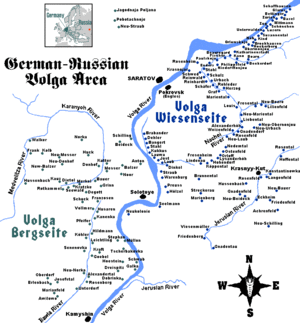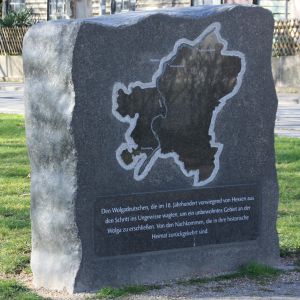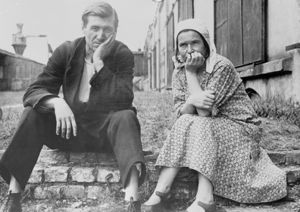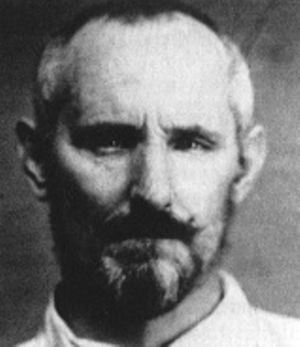Difference between revisions of "What Happened to the Volga German Colonies in Russia"
m (Admin moved page What Happened to the Volga German Colonies in Russia? to What Happened to the Volga German Colonies in Russia) |
|
(No difference)
| |
Latest revision as of 22:37, 21 September 2021
Germany and Russia have had a long relationship going back to the Medieval Period. During the thirteenth century, the Teutonic Knights conquered much of the Baltic region in order to Christianize the pagans but stayed for centuries well into the modern Russian Imperial Period as landed nobles.
Later, Peter I (ruled 1682-1725), the Tsar of Russia, and Catherine (reigned 1762-1796), the Empress of Russia, invited thousands of Germans to Russia to work as skilled experts, financiers, and farmers in order to bring the country closer to the standards of Western Europe. The Russian royals also were heavily infused with German blood. For instance, Catherine was herself German-born and Nicholas II (ruled 1894-1917), the last tsar, had plenty of German ancestry in his family tree. An examination of all the Germans living in Imperial and Soviet Russia reveals the curious case of one particular group – the Volga Germans.
Who were the Volga Germans?
The Volga Germans were a group of peasants from Germany who were enticed to settle the often inhospitable and dangerous region of south-central Russia. The incentives for the Volga Germans to initially settle the region were quite clear: they would be helped financially and were told they would be given a fair amount of autonomy. The reality, though, was much different. The Volga Germans dealt with a Russian government that would go from micromanaging their communities to completely ignoring them, even when they needed protection from Tatar raids and Cossack rebellions.
Even efforts by the Russian government to “Russianize” the Volga Germans did not dampen their desire to stay on the land. Their numbers grew from a few hundred to more than a quarter-million in a century. It was not until the advent of communism, particularly Stalinism when the Volga German colonies were finally wiped out.
Germans in Russia
As mentioned earlier, the first large scale of ethnic Germans into Russian territory took place during the Middle Ages. Although the region is technically the Baltic countries of Latvia, Lithuania, and Estonia, and the native people are not Russians or even Slavic, the area has been under control of the Russian Empire and the Soviet Union on and off for most of the Modern Period. After the initial onslaught by the Teutonic Knights, their ancestors settled into a more stable life and become the nobles and merchants of the region. They were primarily Lutheran by faith and rarely married outside of their group.
By the time of World War I, ethnic Germans comprised about 6% of the total population of the Baltic region but in some of the cities, such as Riga, their numbers were as high as 40%. Things continued this way until the region became part of the Soviet Union – the ethnic Germans were then disposed of their lands and liquidated with the survivors fleeing east to Germany. [1]
The next major migration of ethnic Germans into Russia took place beginning in the seventh century during the reign of Peter the Great (Peter I) and continued through the rule of Catherine the Great (Catherine II). This wave was fundamentally different than the first because it was dispersed throughout the country to the larger urban areas and the immigrants fairly quickly assimilated into greater Russian society. Although at first these skilled and middle-class Germans stayed in German neighborhoods in Moscow, St. Petersburg, and other larger cities and comprised up to 5% of the population in some of those cities, they quickly learned the Russian language and converted to the Russian Orthodox Church. [2] The situation with the urban Germans in Russia was somewhat similar to that of the German-American experience.
Finally, waves of German peasants and farmers, of which the Volga Germans were part, began during Catherine II’s rule and continued throughout most of the nineteenth century. Besides the Volga settlements, Germans established colonies on the Black Sea and in the Caucus Mountains. In total, Russian records put the German population at about 1.8 million in 1897, which although less than 2%, made them one of Russia’s many ethnic minority groups at the time. [3]

The Origin of the Volga Colonies
Catherine the Great followed Peter the Great’s idea of importing Germans and other Western Europeans in the hopes that their skills and knowledge would help elevate Russia’s status and standard of living without changing the fundamental culture of the country. Catherine was herself born in the German kingdom of Anhalt-Zerbst, so she had a strong connection to the German-speaking world. On July 22, 1763, Catherine issued a manifesto that invited European peasants to settle the somewhat inhospitable and often lawless region of the Lower Volga River around the city of Saratov.
The empress hoped that the new peasants would not only transform the unproductive land but also to serve as a buffer against the still untamed Tatars of the steppes. In return for farming the region, Catherine promised that the new settlers would have the right to return to their homeland, would be given a fair amount of local autonomy, and would be exempt from military service. [4]
The new settlers of the Volga region, who came overwhelmingly from the German-speaking kingdoms, were also told they would pay less in taxes and would be given some basic supplies by the government. Each family was to be given fifteen to twenty-five rubles cash, a couple of Kalmuck ponies, a cow or ox, a wooden sokha plow, four wagon wheel, two axles, two shafts, two ropes, and various other tools needed for farming. The settlers were also promised ready-made houses. [5] For German peasants trying to eke out a living on small plots of land along the Rhine River the offer was too good to refuse.
Thousands of Germans immediately began making the journey to St. Petersburg and then to Moscow before finally working their way down the Volga River. From 1763 to 1773, the new German settlers established 104 “mother colonies” on both sides of the Volga River in an area that was larger than the state of Maryland, stretching from Saratov in the north to Volgograd in the south. [6] But the Volga Germans quickly learned just how difficult life in Russia could be.
Becoming Volga Germans
When the first German colonists began arriving in the Volga region, they quickly learned what any Russian could have told them – life in Russia can be difficult. The first set of difficulties they encountered came from the very government that invited them to Russia. There were no ready made homes waiting for them so they had to build sod houses much as their ancestors later did when they migrated to the plains of America and Canada. [7] There was also a lack of stock available and the manner in which the land was given to them was not conducive to the German idea of private land ownership, so they adopted the Russian Mir system of farming. The colonists lived in the village or town and worked communally in the fields every day, much as their Russian neighbors did. [8] Once the Volga Germans overcame those initial problems, they then faced a plethora of other problems.
The government often micromanaged the colonies early on, forbidding them from engaging in trades other than farming and failing to provide doctors and other basic medical care. Russians were also forbidden from living in the colonies and Germans were forbidden from moving to Russian cities, which was fine for most of the insular minded Volga Germans [9] Worse still, although the government promised to protect the settlers under the terms of the Manifesto, the Volga Germans were often left to fend for themselves against Tatar raids and Cossack rebellions, which often used the Volga Germans as foreign scapegoats. [10]
Despite the government’s attempts to micromanage the Volga German colonies, they, for the most part, left the people alone culturally. The cultural hands-off policy followed by the tsars of the eighteenth century and most of the nineteenth century came to an end, though, while the future Emperor Alexander III (reigned 1881-1894) was the crown prince. Alexander III believed strongly in the idea of Russification, forcing the non-Russian nationalities of the Russian Empire to become more Russian, and was allowed to pursue the policy under the rule of his father, Alexander II (ruled 1855-1881). Under the Russification policy, the Volga German schools were required to teach the virtues of absolute monarchy [11] and by 1897 was mandated to teach Russian, [12] although many of the Volga German school had already taught Russian for some time and a large share of the Volga Germans, especially the younger generation, knew Russian by the turn of the century. Perhaps most importantly, Volga German men were no longer exempt from military service after 1871. [13] This final point of the Russification program probably did more to change the colonies than the others. Young Volga German men left their isolated colonies, lived in barracks with men from around the Empire, and often never came back, instead opting to marry Russian women and live as Russians in the cities.
The End of the Volga German Colonies
The Russian government’s policy of Russification in the late nineteenth century was certainly not welcomed by the Volga Germans, but it was not what destroyed their colonies. By the late nineteenth century, the Volga Germans had evolved into a distinct ethnicity that was as different from their German-speaking cousins back in the Fatherland as they were from their Russian speaking neighbors in Mother Russia. The Volga Germans had in fact adopted many Russian foods, drinks, clothing, loan words, and as discussed earlier, the Mir method of farming from their Russian neighbors. A bit of the tough Russian resolve and stoic way of viewing the world had also rubbed off on the Volga Germans, because despite all the hardships they had endured their numbers continued to rise into the early twentieth century. But then World War I happened.
After Russia went to war against the German Empire and the German-dominated Austro-Hungarian Empire, anti-German policies were instituted by the imperial Russian government. The German language was banned in all schools in 1915, which proved only to be the beginning. The collapse of the Romanov brought a temporary reprieve as the Bolsheviks temporarily recognized the Volga colonies as an autonomous region, but that was accompanied by a complete and systematic attack on the Volga German churches, which were the heart of the Volga communities. Many of the Volga Germans began leaving at that point for Germany, but they were so out of place there that most continued onward to the United States, Canada, and Argentina.
The final blow came when Joseph Stalin became dictator of the Soviet Union. Stalin labeled the Volga Germans kulaks and therefore enemies of the state and worthy of liquidation during his first Five Year Plan (1928-1933). [14] The attacks on and purges of the Volga colonies continued after 1933 and once World War II started the last of the colonists were killed or forcibly moved – the men were sent to work camps and gulags, while the women and children were often sent to Kazakhstan. The men who survived the work camps were allowed to reunited with their families after Stalin died in 1953, but there was no longer a Volga German ethnic group in the Soviet Union. [15]
Conclusion
The Volga Germans were a proud people who successfully farmed a dry, arid land that many thought was unfarmable. They endured under governments that were often uncooperative or overbearing and survived violence at the hands of their neighbors, but their numbers continued to grow into the early twentieth century. As resilient as the Volga Germans were, though, they were unable to overcome the all-encompassing oppressive nature of totalitarianism, especially in the form of Stalin’s communism. The Volga Germans who were lucky enough to escape the gulags made their way to the plains of North American and rural regions of Argentian.
References
- ↑ Waters, Tony. “Towards a Theory of Ethnic Identity and Migration: The Formation of Ethnic Enclaves by Migrant Germans in Russia and North America.” International Migration Review 29 (1995) pgs. 523-4
- ↑ Waters, pgs. 526-8
- ↑ Waters, p. 522
- ↑ Koch, Fred C. The Volga Germans: In Russia and the Americas, from 1763 to the Present. (University Park, Pennsylvania: Pennsylvania State University Press, 1978), pgs. 6-7
- ↑ Koch, p. 21
- ↑ Kolberdanz, Timothy J. “The Volga Germans in Old Russia and in Western North America: Their Changing World View.” Anthropological Quarterly 48 (1975) p. 210
- ↑ Koch, pgs. 24-26
- ↑ Koch, p. 32
- ↑ Koch, pgs. 40-44
- ↑ Koch, pgs. 96-108
- ↑ Kloberdanz, p. 211
- ↑ Kohl, p. 145
- ↑ Kohl, p. 198
- ↑ Kohl, p. 260
- ↑ Kohl, p. 287




